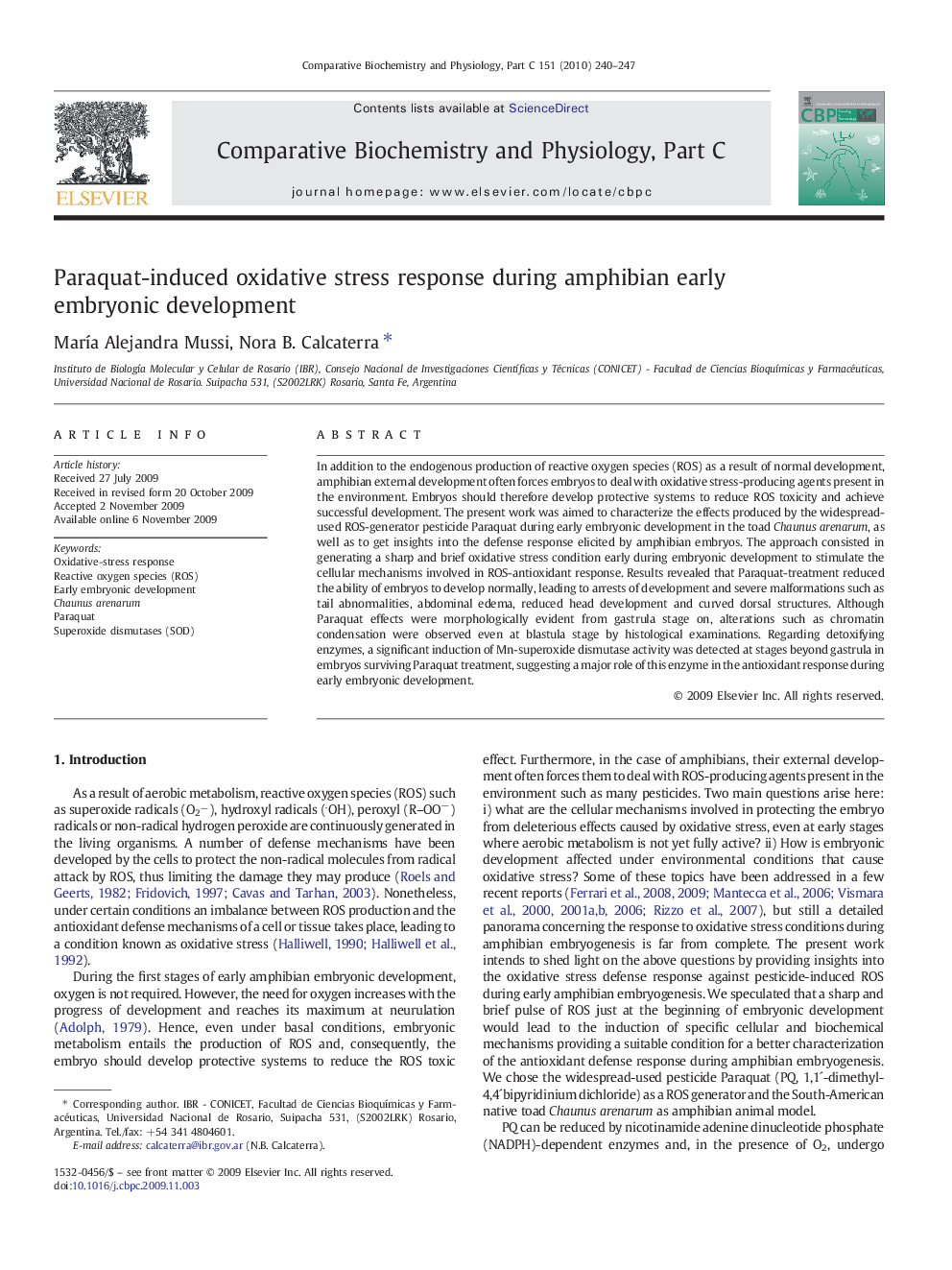| کد مقاله | کد نشریه | سال انتشار | مقاله انگلیسی | نسخه تمام متن |
|---|---|---|---|---|
| 1978181 | 1061530 | 2010 | 8 صفحه PDF | دانلود رایگان |

In addition to the endogenous production of reactive oxygen species (ROS) as a result of normal development, amphibian external development often forces embryos to deal with oxidative stress-producing agents present in the environment. Embryos should therefore develop protective systems to reduce ROS toxicity and achieve successful development. The present work was aimed to characterize the effects produced by the widespread-used ROS-generator pesticide Paraquat during early embryonic development in the toad Chaunus arenarum, as well as to get insights into the defense response elicited by amphibian embryos. The approach consisted in generating a sharp and brief oxidative stress condition early during embryonic development to stimulate the cellular mechanisms involved in ROS-antioxidant response. Results revealed that Paraquat-treatment reduced the ability of embryos to develop normally, leading to arrests of development and severe malformations such as tail abnormalities, abdominal edema, reduced head development and curved dorsal structures. Although Paraquat effects were morphologically evident from gastrula stage on, alterations such as chromatin condensation were observed even at blastula stage by histological examinations. Regarding detoxifying enzymes, a significant induction of Mn-superoxide dismutase activity was detected at stages beyond gastrula in embryos surviving Paraquat treatment, suggesting a major role of this enzyme in the antioxidant response during early embryonic development.
Journal: Comparative Biochemistry and Physiology Part C: Toxicology & Pharmacology - Volume 151, Issue 2, March 2010, Pages 240–247